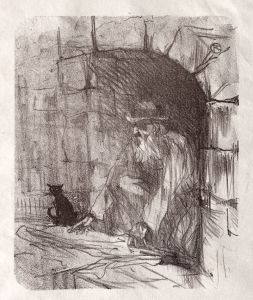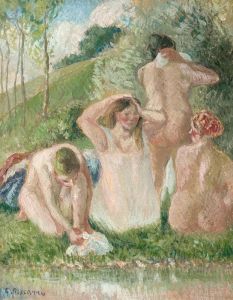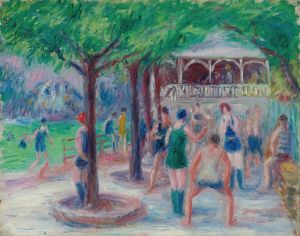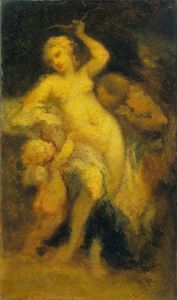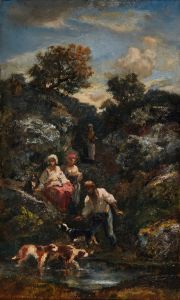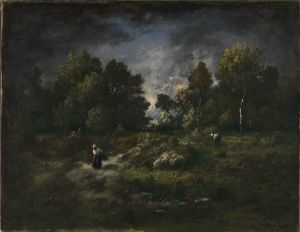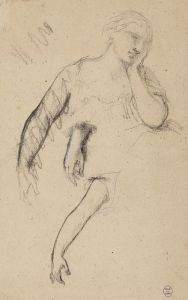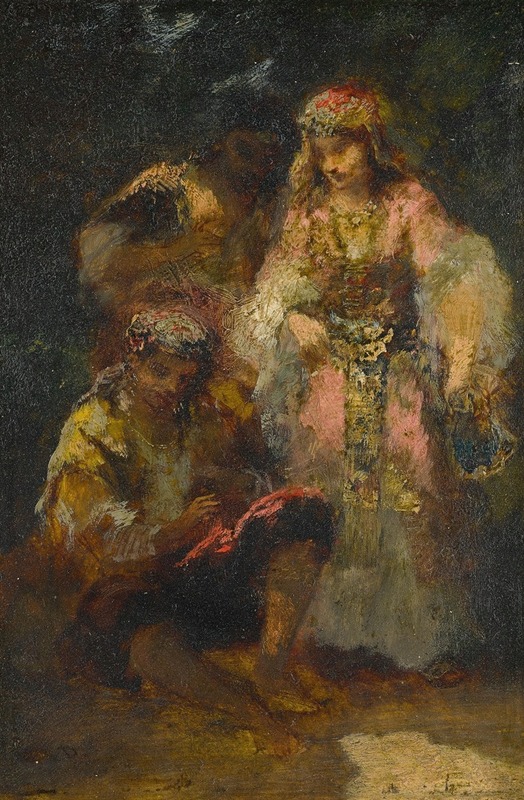
Groupe de bohémiennes en forêt
A hand-painted replica of Narcisse-Virgile Diaz de La Peña’s masterpiece Groupe de bohémiennes en forêt, meticulously crafted by professional artists to capture the true essence of the original. Each piece is created with museum-quality canvas and rare mineral pigments, carefully painted by experienced artists with delicate brushstrokes and rich, layered colors to perfectly recreate the texture of the original artwork. Unlike machine-printed reproductions, this hand-painted version brings the painting to life, infused with the artist’s emotions and skill in every stroke. Whether for personal collection or home decoration, it instantly elevates the artistic atmosphere of any space.
Narcisse-Virgile Diaz de la Peña was a prominent 19th-century French painter associated with the Barbizon School, a movement that emphasized naturalism and the depiction of rural landscapes. One of his notable works is "Groupe de bohémiennes en forêt" (Group of Gypsy Women in the Forest), which exemplifies his skill in capturing both the human form and the natural environment.
Diaz de la Peña was born in Bordeaux, France, in 1807, and he became known for his richly colored and atmospheric landscapes. His work often featured figures set against lush, wooded backgrounds, a hallmark of the Barbizon School's focus on nature. The Barbizon School itself was named after the village of Barbizon near the Forest of Fontainebleau, where many artists gathered to paint en plein air, or outdoors, to better capture the effects of light and atmosphere.
"Groupe de bohémiennes en forêt" is a testament to Diaz de la Peña's ability to blend figure painting with landscape art. The painting depicts a group of Romani women, often referred to as "gypsies" in 19th-century terminology, situated within a forest setting. This choice of subject reflects the Romantic fascination with exotic and marginalized communities, which were often idealized or romanticized in art and literature of the period.
The composition of the painting is carefully balanced, with the figures integrated into the natural surroundings. Diaz de la Peña's use of color is particularly noteworthy; he employed a warm palette to create a sense of harmony between the figures and the forest. The dappled light filtering through the trees adds a dynamic quality to the scene, highlighting the textures of the foliage and the clothing of the women.
Diaz de la Peña's technique involved loose, expressive brushwork, which contributed to the overall impressionistic feel of his landscapes. This approach allowed him to convey the transient effects of light and atmosphere, a characteristic that would later influence the Impressionist movement. Although he was primarily known for his landscapes, his ability to depict the human figure with sensitivity and emotion is evident in this work.
The painting also reflects the social attitudes of the time. The depiction of Romani people in art often carried connotations of freedom and a connection to nature, aligning with the Romantic ideals of the 19th century. However, it is important to recognize that such representations were often based on stereotypes and did not necessarily reflect the realities of Romani life.
Diaz de la Peña's work, including "Groupe de bohémiennes en forêt," was well-received during his lifetime, and he exhibited regularly at the Paris Salon. His paintings were appreciated for their vibrant color and emotive qualities, and he became an influential figure among his contemporaries.
Today, Diaz de la Peña's paintings are held in various public and private collections, and they continue to be studied for their contribution to the development of landscape painting in the 19th century. "Groupe de bohémiennes en forêt" remains an example of his ability to capture the interplay between human figures and their natural surroundings, a theme that resonates with the enduring appeal of the Barbizon School.








